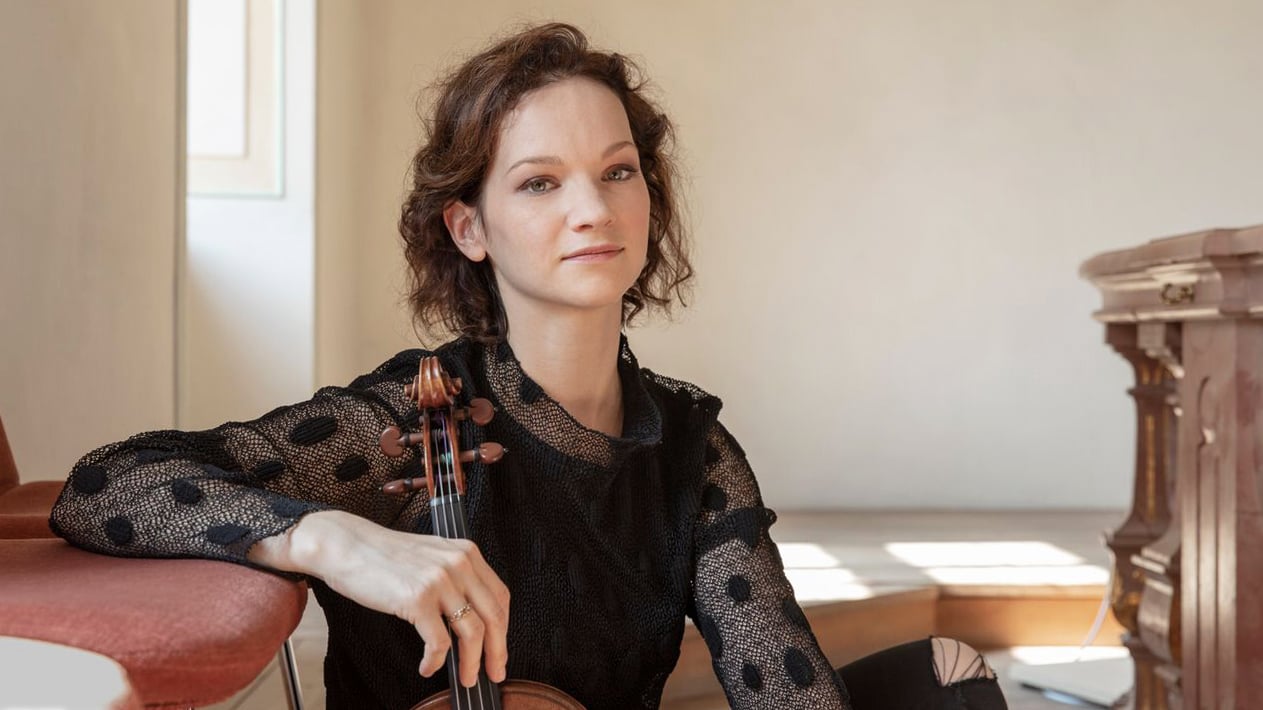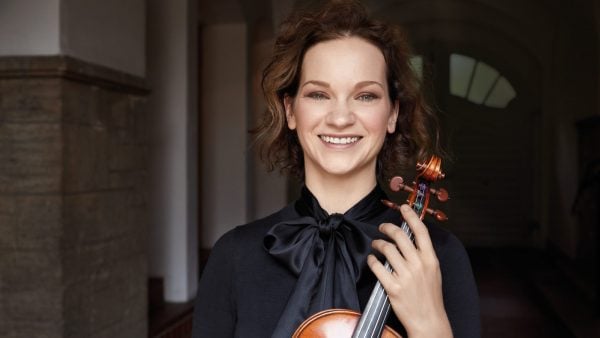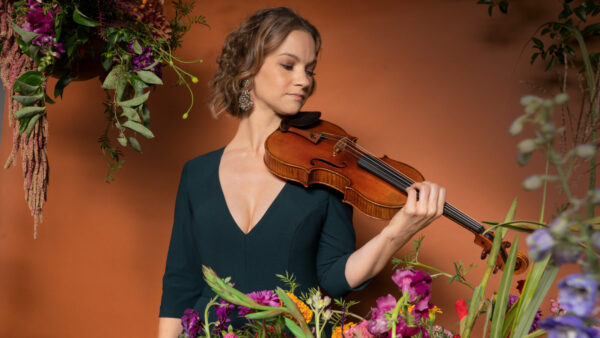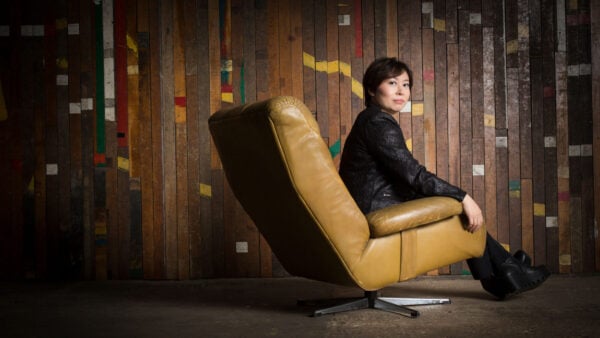
Hilary Hahn (Photo: Dana van Leeuwen/Decca)
Many musicians and music-lovers thrive on their “daily dose of Bach.” Grammy Award-winning violinist Hilary Hahn does too: Bach has been a part of her life, both in practice and performance, nearly every day since she was nine years old. Her most recent album on Decca, Hilary Hahn Plays Bach: Sonatas 1 & 2, Partita 1, explores her ongoing fascination with the composer.
Hahn spoke with us about the start of her musical journey with Bach, the challenges and rewards of playing his music, and how musical discoveries—even in live performance—keep Baroque music fresh for 21st century listeners.
When did your musical journey with Bach begin?
When I was growing up, my dad sang in choirs, so we had some LPs of Bach’s B Minor Mass and some of his cantatas. My dad also played piano, and one of the pieces he practiced every day was one of the Two-Part Inventions. I learned piano shortly after that, and I was already playing violin. So I also learned the Two-Part Inventions, and I didn’t even know it was by Bach: I hadn’t played anything by him yet. As a six-year-old, I didn’t understand that Bach was a prominent composer; it was just a name.
When I was nine years old, I started getting more advanced with my violin playing, and I learned a couple of movements of the G Minor Sonata, (which is on this latest album), in preparation for my first full recital when I was ten years old. So I learned the Siciliana and Presto movements, and after that, it seemed like pretty much every lesson I had, my teacher wanted to hear me play some Bach. It was pretty much a daily effort, and I really liked it, but it took me a number of years of playing it to feel like the music was really a part of me.
What were the challenges of learning to play Bach’s violin music?
Bach’s solo works are technically difficult, so when you first start working on them as a student, there’s the hurdle of how to play them. Even addressing basic things like a four-note chord. On a violin, since the bridge is arched, it’s very hard to play four notes at once. How do you give the impression of one chord leading to another one in every voice? Do you break the chords upwards? Do you linger? Do you try to play all four at once? Do you put the weight on the bottom or the top? There are all of these little things to think about. And that’s just one chord, in the right hand!
When you look at the left hand, which determines all of the pitches and the dexterity within a slur and so on, you’re looking at things like intonation and vibrato. What kind of vibrato are you going to use? What kind of rhythm are you going to use on a particular decorative passage? Your fingers also have to do really quick string crossings in record time — even if it’s a slow movement. So there’s a lot of consideration about fingerings, hand positions, string-crossings, and all of that ties into phrasing and the emotional impact of the music.
When you’re learning this repertoire, there’s a whole set of hurdles that make it feel awkward, and you doubt that you’re conveying the music properly because you’re just so tied up in all of the technique. But the more you become comfortable with the technique, the more you play a piece, put it aside, revisit it, put it aside, revisit it, the technique and flow of the music become integrated.
When I could start to integrate those two things, when it felt like the technique had a purpose within the music, that was when it really started to click for me. I think that was in my early teens, at which point I’d been playing this music pretty steadily for several years, which is not an opportunity you get with a lot of repertoire as a student. Usually, you learn something, put it down, and move on to the next thing. You work on it until you play it at a student recital or until your teacher gives you a new thing to work on, and you don’t really come back and revisit it. These pieces really helped push my musicality further, to try and connect to audiences through this music.
You’ve been playing Bach’s music pretty much every day since you were 9 years old. What is it about the music that brings you back to it every day?
There’s a lot in this music. It’s rare for the violin to have so much polyphony to work with, as opposed to piano where there are a lot of possibilities, because you can have ten voices at once. On violin, you have four strings, and that’s already somewhat of a limitation. The musical complexity and variety in Bach’s violin music is really spectacular. It’s an endless amount of material to dive into. And if you decide all of a sudden that you want to play something differently, with a faster tempo, it changes all of the proportions.
For me, a lot of these new ideas happen in performance. I’ll get ideas on stage out of the blue, and I’ll try them. Because I’ve played these pieces so much, it doesn’t throw me off to try new things in the moment. It’s where my mind is working a little bit differently from how it works in the practice room. If there’s something that I’ve tried that I want to explore more, I’ll bring it back and practice it again the next day. I’ll say, ‘Well if I do this here, what does it do to this part of the music? And can I do this in a similar piece?’
It’s a working space, a meditation, and at the same time it’s got all of this emotional impact. I feel like these pieces are really progressive. There’s a lot of dissonance and unexpected resolution that doesn’t seem to happen in other music of that era. It feels very contemporary, and I can emphasize those aspects to keep it fresh.
(The interview featured in this story was conducted by Stephen Raskauskas.)





